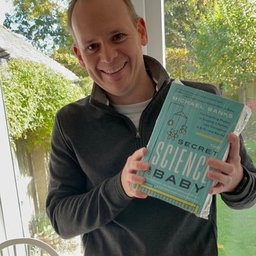
Michael Banks
News Editor at Physics World
📚 THE SECRET SCIENCE OF BABY (2022), PHYSICS AROUND THE CLOCK out 11 September 2025 https://t.co/8Tmpi6rI8B. News Editor of @physicsworld.
Articles
-
1 week ago |
physicsworld.com | Michael Banks
Computational physicist Jose Milovich of the Lawrence Livermore National Laboratory (LLNL) and colleagues have been awarded the 2025 Plasma Physics and Controlled Fusion (PPCF) Outstanding Paper Prize for their computational research on capsule implosions during laser fusion.
-
1 week ago |
physicsworld.com | Michael Banks
Astronomers at the European Southern Observatory’s Very Large Telescope (VLT) have created a thousand colour image of the nearby Sculptor Galaxy. First discovered by Carloine Herschel in 1783 the spiral galaxy lies 11 million light-years away and is one of the brightest galaxies in the sky.
-
1 week ago |
iop.org | Michael Banks
Astronomers at the European Southern Observatory’s Very Large Telescope (VLT) have created a thousand colour image of the nearby Sculptor Galaxy. First discovered by Carloine Herschel in 1783 the spiral galaxy lies 11 million light-years away and is one of the brightest galaxies in the sky.
-
3 weeks ago |
physicsworld.com | Michael Banks
The Japanese firm ispace has suffered another setback after its second attempt to land on the Moon ended in failure yesterday. The Hakuto-R Mission 2, also known as Resilience, failed to touch down near the centre of Mare Frigoris (sea of cold) in the far north of the Moon after a sensor malfunctioned during descent.
-
4 weeks ago |
physicsworld.com | Michael Banks
The Leinweber Foundation has awarded five US institutions $90m to create their own theoretical research institutes. The investment, which the foundation says is the largest ever for theoretical physics research, will be used to fund graduate students and postdocs at each institute as well as several Leinweber Physics Fellows. The Leinweber Foundation was founded in 2015 by the software entrepreneur Larry Leinweber.
Try JournoFinder For Free
Search and contact over 1M+ journalist profiles, browse 100M+ articles, and unlock powerful PR tools.
Start Your 7-Day Free Trial →Coverage map
X (formerly Twitter)
- Followers
- 1K
- Tweets
- 5K
- DMs Open
- Yes

RT @RBmediaAuthors: Get the "Secret Science of Baby: The Surprising Physics of Creating a Human, from Conception to Birth - and Beyond" aud…

RT @andrewlownie: New 'no holds barred' biography about Prince Andrew and Sarah ferguson announced https://t.co/pXxUUIg2H7

RT @pinstripedline: Possibly my favourite Grauniad correction of all time! https://t.co/gJqakvrard
